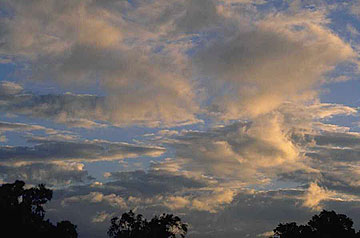Salinity Management Guide

Obtaining local reference evapotranspiration
If your landscape is located within California, you can obtain a reference evapotranspiration (ET0) value that's appropriate for the site by consulting the Web pages of the California Irrigation Management Information System (CIMIS).
CIMIS is a statewide network of specialized weather stations. These automated stations monitor relevant aspects of weather — air temperature, wind speed, and relative humidity — at the site of each station. The stations transmit this information to a centralized computer in Sacramento. There, the monitored data are used in analytical and empirical equations to calculate the ET0 values for the various sites. Operated by the California Department of Water Resources, the CIMIS system currently includes more than 130 weather stations. At present, over 20 of those stations are located in the coastal region of southern California, with ten more located in nearby inland valleys.
For your area's ET0, log onto the CIMIS website. Follow the instructions shown to retrieve the needed data from the closest CIMIS station. To obtain the information off-line, telephone the CIMIS Helpline at (800) 922-4647.
Use the monthly average ET0 for the closest CIMIS station to your site if you want to calculate a general approximation of your landscape's evapotranspiration. You can later calculate the ET more precisely when you begin to figure out exactly how much water to use for irrigation. To obtain those refined estimates, you may find it useful to use weekly, or even daily, data in your calculations.
Example:
You want to find out how much water is lost to evapotranspiration from your Long Beach, California, landscape in July:
- Check the list and the map of CIMIS stations to determine which station is closest to Long Beach. After doing so, you find that station 174 is the station you want.
- Look up the monthly average reference evapotranspiration for Station 174 for July. You find out that it's 5.93 inches. So, on average, approximately 5.93 inches of water is lost to evapotranspiration from the Long Beach CIMIS site in July. (Remember that this is only an average, and that the ET0 that applies in a particular year could be higher or lower.)
- You'll use this ET0 figure, along with the relevant plant adjustment factor, in your calculation of plant (or landscape) evapotranspiration.
| « Previous page | Next page » |